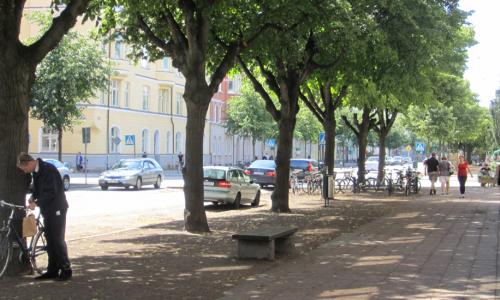Smart growth: from A to B, intelligently Designing communities with more diverse, accessible, and efficient transportation options falls under a set of principles collectively known as "smart growth."
Smart growth practices may include well-designed public transit options, mixed-use development (where residential and commercial spaces are integrated together), and bicycle- and pedestrian-friendly roads and sidewalks.
In addition to these community-design features, smart growth also means using existing and emerging technology like GPS and mobile data networks to reduce time wasted stuck in traffic, vehicle miles travelled, and oil use. These and other smart growth policies are an integral part of Half the Oil, our plan to reduce projected US oil use in half within 20 years.
The many benefits of smart growth
We project that smart growth policies and practices could save nearly 1.5 million barrels of oil per day by 2035.
In addition to the economic and environmental benefits of reduced oil use, smart growth policies offer significant local benefits.
Mixed-use development can help cut commute times and congestion while strengthening local communities. Better public transit options — and more walkable and bicycle-friendly roads — help reduce the need to drive. Fewer car trips means reducing air pollution, the amount of money spent on gas, and our oil use.
A smart growth future is a more livable future—and one well within our reach.
Examples of smart growth
While smart growth policies and practices may seem far-fetched, a smart growth future isn't far away. For some communities, it's already here.
In the mid-1980s, the suburban county of Arlington, VA began implementing mixed-use development around bus and rail transit systems. Arlington’s many "urban villages" emphasized pedestrian access, smarter traffic patterns, bike lanes, and livable spaces with public art, small parks, and wide sidewalks.
As a result, heavily traveled Wilson Boulevard saw traffic drop nearly 16 percent between 1996 and 2006, even though Arlington's population grew by almost 8 percent over the same period.
Arlington isn’t alone: dozens of other communities are benefiting from smart growth policies. These include cities as large as Chicago, IL, and towns as small as Davidson, NC (2010 population: 10,944).
Read more about smart growth and the benefits of reducing oil use here.




